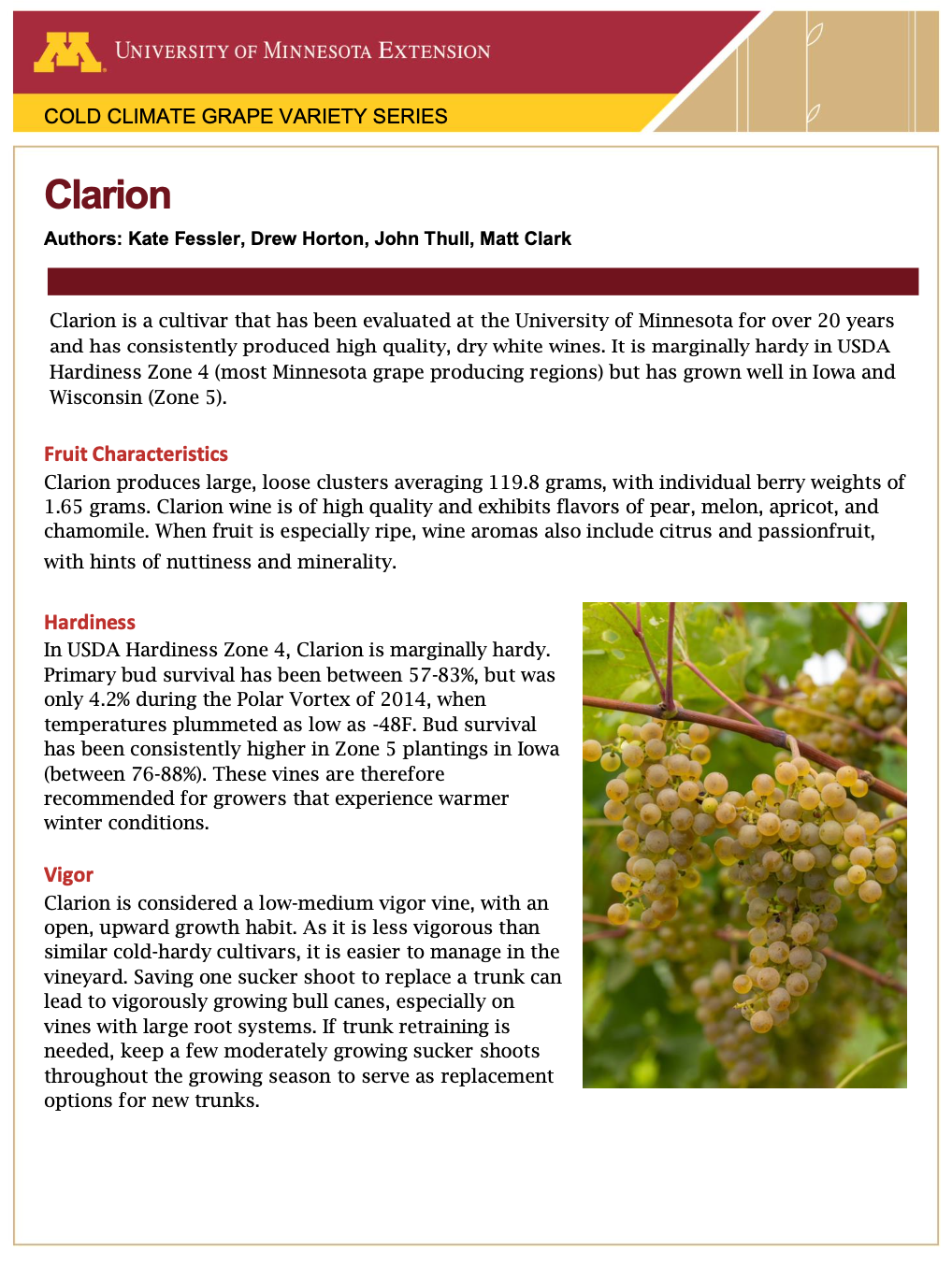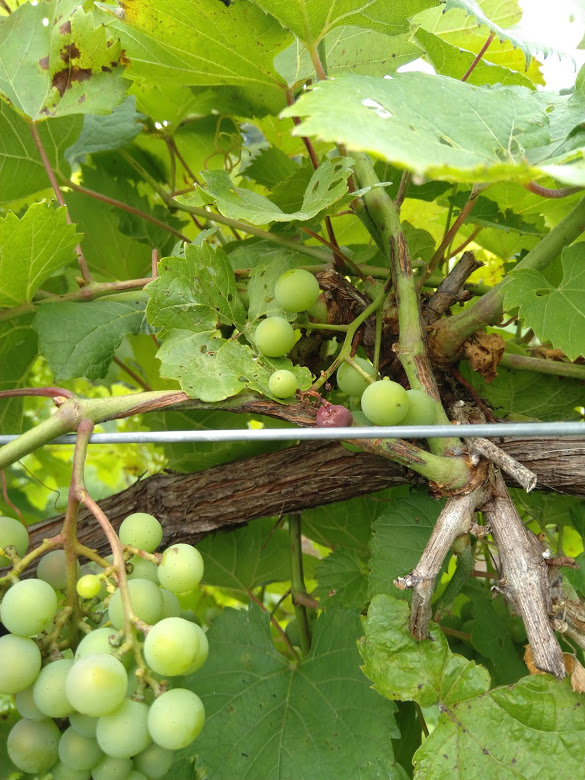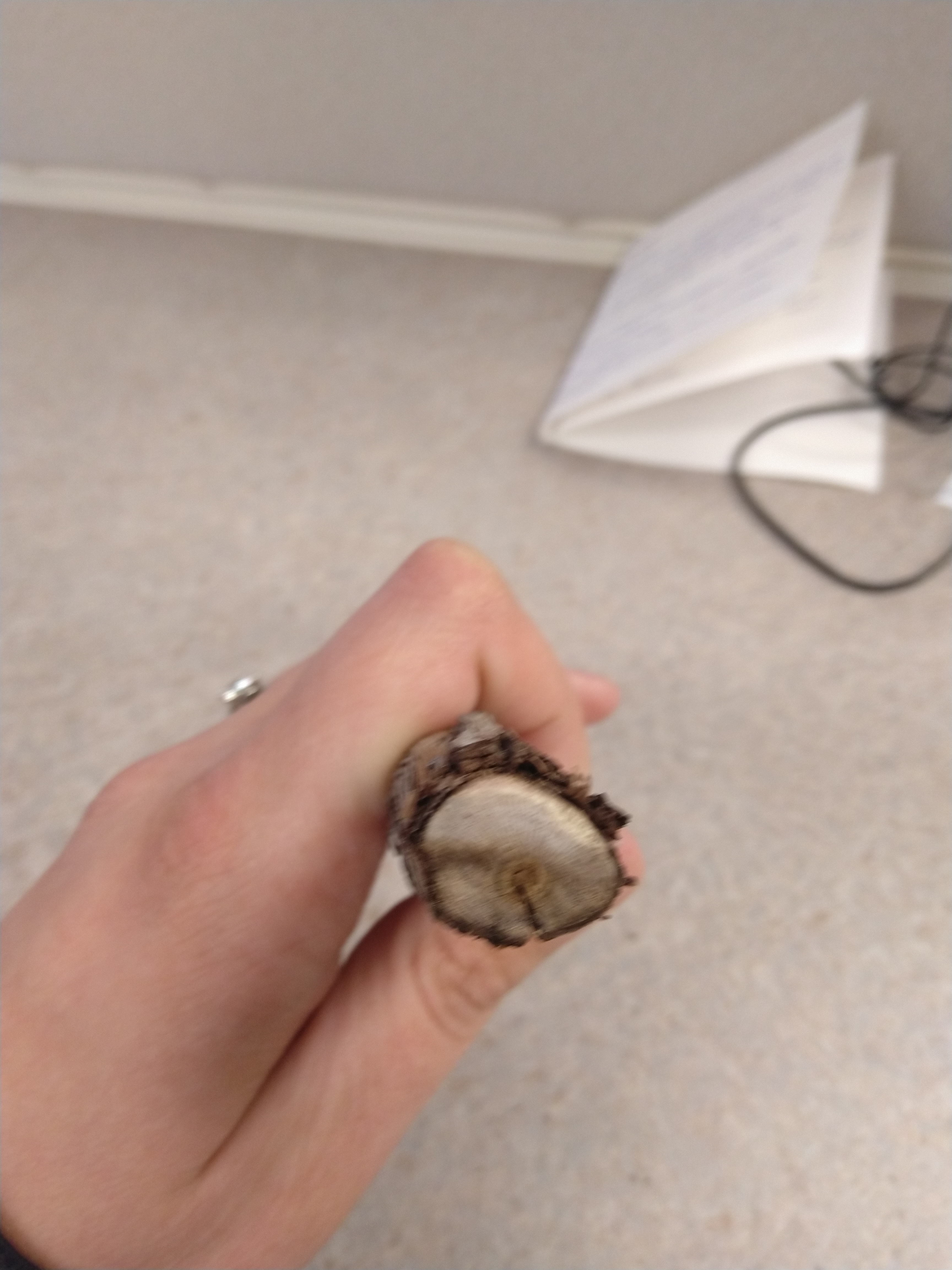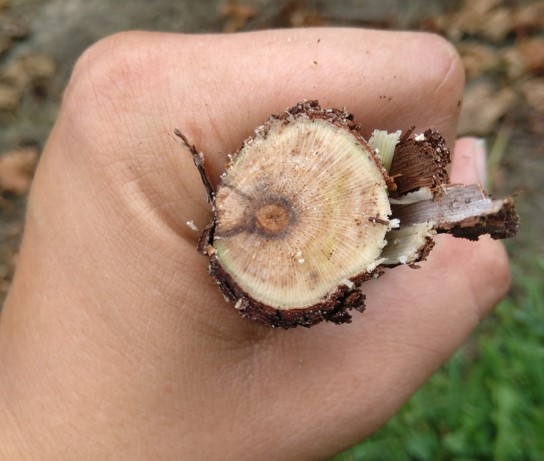
Welcome to the Grape Breeding and Enology project website
Located at the University of Minnesota-Twin Cities, we conduct research in the Department of Horticultural Science and at the Horticultural Research Center. Our focus is on grapevine cultivar development which includes: wine grapes, table grape varieties, and ornamentals that survive and thrive in cold-climate conditions. We also work on understanding the mechanisms of disease and pest resistance so that we can incorporate these traits as a way to improve sustainability for Minnesota growers. In addition to breeding grapes, we develop and teach enology best practices for cold-hardy grapes.
Ask for Clarion!
By Kate Fessler, Drew Horton, John Thull, and Matt Clark
We have developed a short guide for our most recent UMN release, 'Clarion'! This high quality white wine cultivar is hardy to USDA Zone 5. Click on the preview below to open the PDF, or at the following link: Link to Clarion fact sheet.

News
Early Season Control of Phomopsis on Grapes
Author: Annie Klodd, Extension Educator
Phomopsis is a prevalent grape disease in Minnesota, and should be sprayed for as part of your early season spray program between bud break and pre-bloom stages. If uncontrolled, it causes brown and black lesions on the canes, black/yellow spots on the leaves, and rot on the ripe berries that can lead to weaker plants and yield loss. Below are some key tips for managing phomopsis:

1) Your timing is important: Spray for phomopsis between bud break and bloom after wet weather, typically 1-3 times. Phomopsis disease spores overwinter on last year's canes and woody tissue. In the spring once conditions are right, the spores are released and spread to new shoots and leaves via rain drops. Infection requires at least 6 hours of leaf wetness, and ideal temperatures are between 60-68 degrees. Since these weather conditions are common in the spring, it is usually necessary to spray at least once.
2) Once a shoot is infected, symptoms do not appear immediately. Symptoms of the infection become visible on the leaves a few days after the infection, and on the canes 3-4 weeks after infection. The fungus will lay dormant on the berries until veraison, so symptoms will not be visible until after veraison. In other words, symptoms you see during harvest probably happened during bloom and needed to be treated weeks earlier. By the time the fruit is beginning to rot, it is too late to treat effectively.
3) The following products have effectiveness on phomopsis: Captan (very effective), Mancozeb (very effective), Ziram (moderate), and Pristine (moderate). Apply one or more of those products at bud break, before the shoots are 4 inches, especially if the conditions are right for the fungi to spread (see #1). Do another application when the shoots are between 4-10 inches, and again pre-bloom if needed (weather-depending). Mancozeb, Ziram, and Pristine also control black rot.
- Mancozeb: REI 24h, PHI 66 days. High effectiveness on Phomopsis, anthracnose, black rot, and downy mildew
- Captan: REI 72h, PHI 0 days. High effectiveness on Phomopsis and downy mildew. Moderate effectiveness on anthracnose.
- Ziram: REI 48h, PHI 10 days. High effectiveness on black rot. Moderate effectiveness on phomopsis, anthracnose, and downy mildew.
- Pristine: REI 12h*, PHI 14 days. High effectiveness on anthracnose, black rot, downy mildew, and powdery mildew. Moderate effectiveness on phomopsis and botrytis bunch rot.
*Pristine's REI becomes 5 days if you are doing shoot positioning.
4) As much as possible, determine the timing of your sprays based on when weather conditions are right for phomopsis infection. If your work schedule is flexible, do not rely on a "calendar spray" for diseases or insects in general. It is much more effective to spray based on plant growth stage, weather, scouting, and knowing how much infection you have had in past years. If weather has been dry and warm since your last spray, the phomopsis spores are not likely active. If weather has been cool and wet, spraying becomes more necessary because spores have likely spread.
5) Prune out canes that have black lesions on them (See photo above, and in Ohio Sate page below) and remove or destroy them.
Resources:
Tips for Reducing Grapevine Trunk Disease During Pruning

